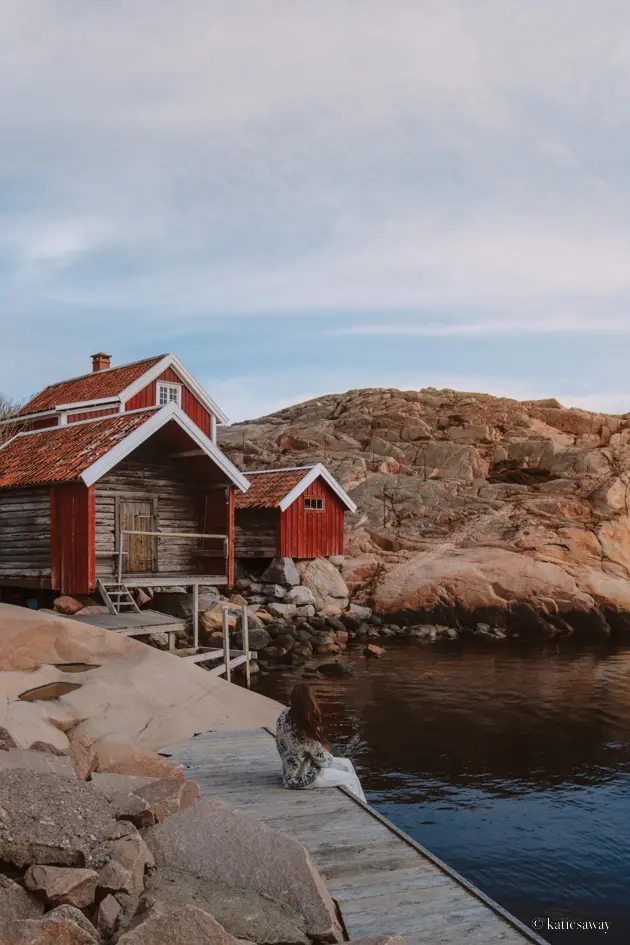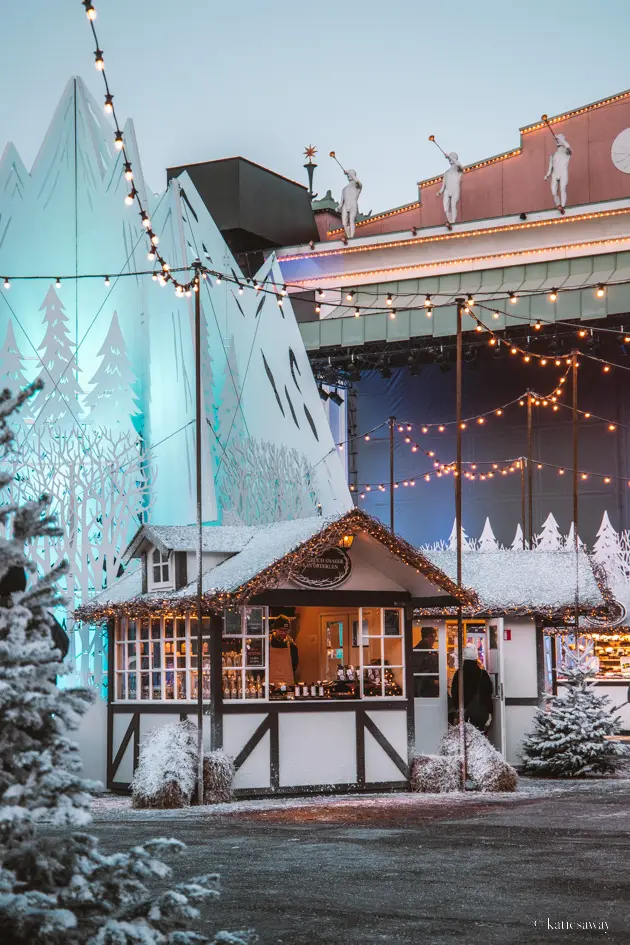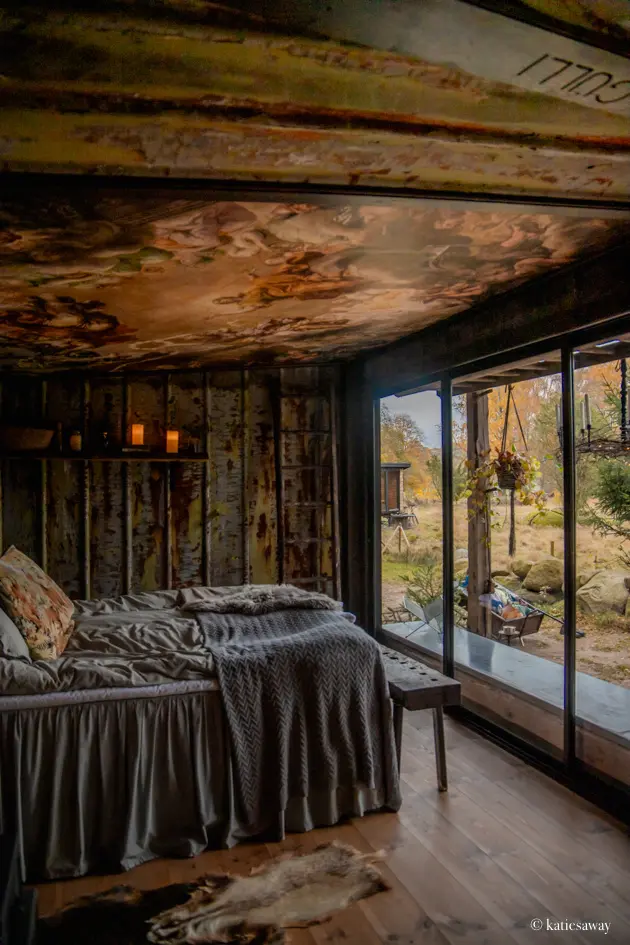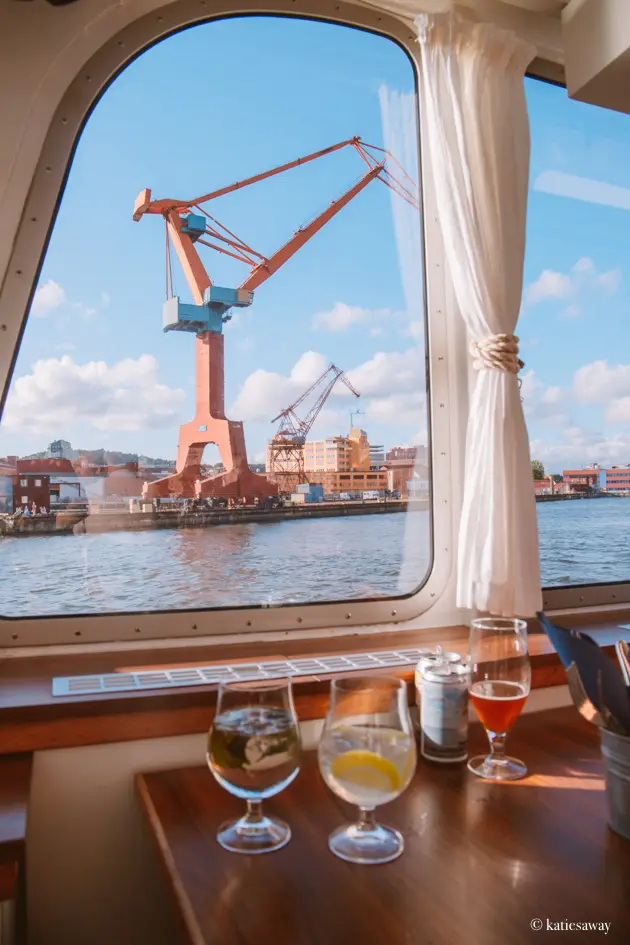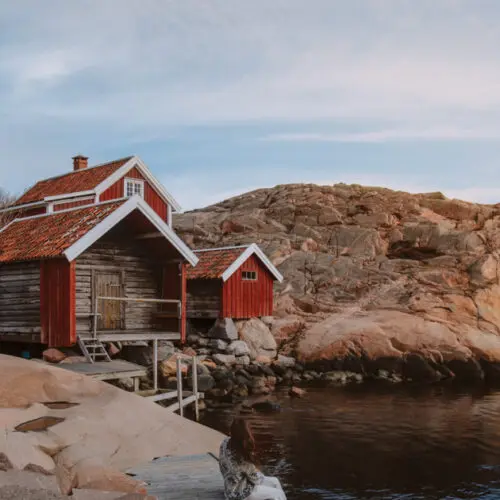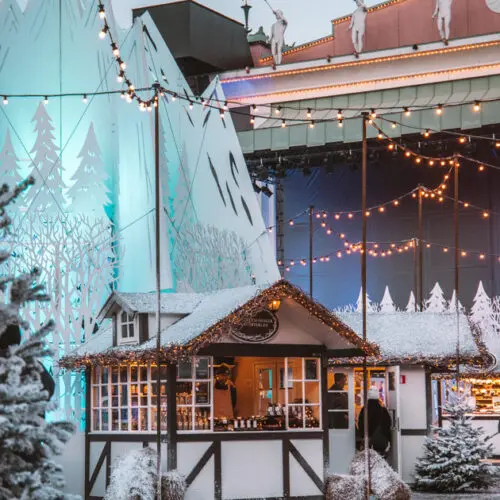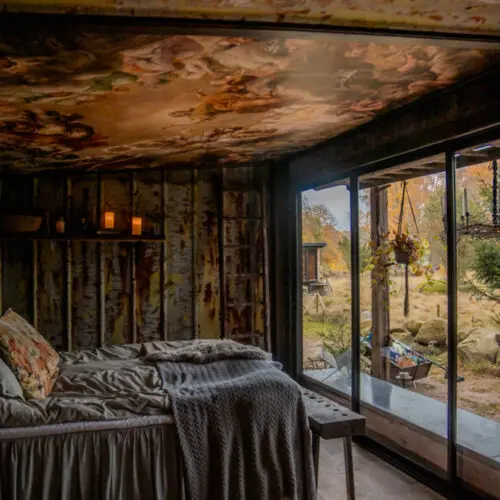Sweden’s high Coast (Höga Kusten) is one of the best places to visit in Northern Sweden – a UNESCO world heritage site, with incredible landscapes formed after the ice age 15,000 years ago. The high coast is named this way as it is home to the highest coastline in the world, a coastline that still today is rising.
If you have been travelling in Sweden before, you may already be accustomed to the raw nature and small fishing villages you find elsewhere in the country. However, there is definitely something special about the High Coast that really makes it stand out from the crowd. This area of Northern Sweden feels much more authentic than the more touristy areas such as Sweden’s West Coast, Österlen, or the Stockholm Archipelago. It is much calmer, the villages feel almost trapped in time, and the hikes are something else!
In this guide, I will tell you about 12 places to visit on Sweden’s High Coast. These are more popular destinations with something to see or do. Keep in mind, that there are so many hikes and fishing villages around Höga Kusten that this list barely touches the surface! The same goes for hikes – here are a few with amazing views, however, there are so many more to be discovered!
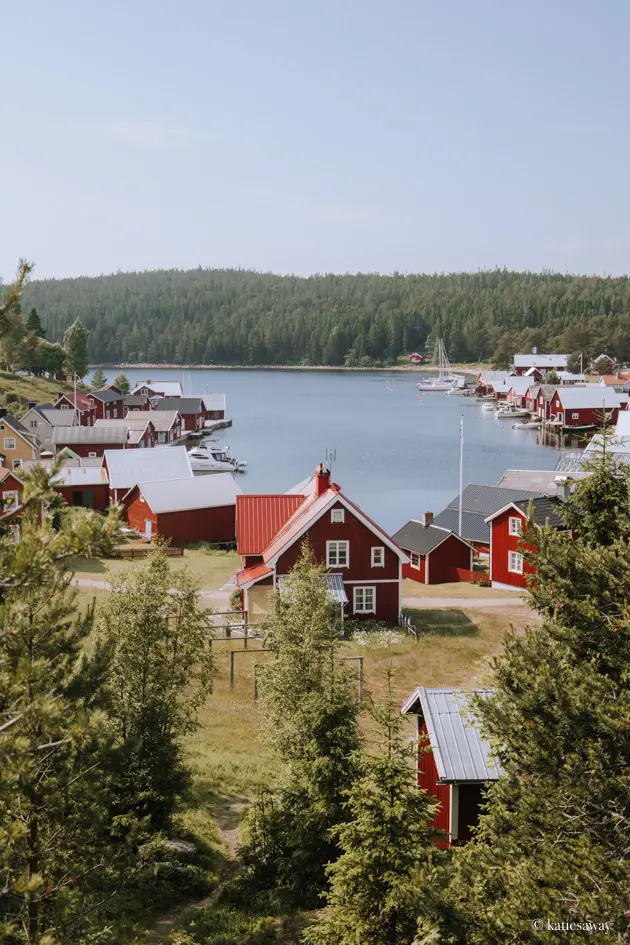
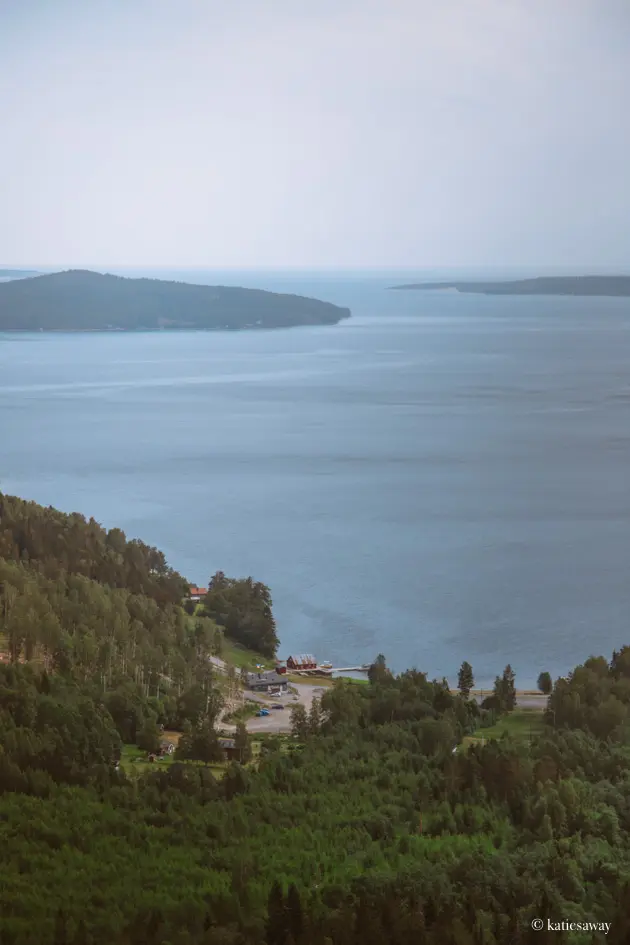
Please note that this post contains affiliate links meaning that if you make a purchase through the link, I receive a small commission at no additional cost to you. I make sure to only ever promote products and brands I have used and like, and that all links are to trusted websites.
Where to stay in the High Coast
There are a few different places that are great to stay along Sweden’s High Coast, depending what you want to do, whether you have a car, and what your budget is! From both the places I have stayed, and those my friends and family have stayed and recommend, here are a few good options:
Björkuddens Hotell & Restaurang
Björkuddens Hotell & Restaurang is a beautiful boutique hotel located just by the water below the Högakustbron. The prices here are quite good, especially if you are happy to share a bathroom with other guests. This is somewhere I would recommend staying if you plan to hike the Högakustleden. It is right by the trailhead so perfect place to wake up and just begin hiking. You can find out more about the hotel here!
Norrfällsvikens Camping, Stugby & Marina
Norrfällsvikens Camping, Stugby & Marina is a “camping village” with small cottages and camping spots. It is the perfect place to stay if you want to stay in the middle of the high coast, in an old fishing village, immersed in a real summery atmosphere. I would say this is a great place to stay if you are travelling with kids as there are often lots of other families around, and there’s a big sandy beach nearby.
You can find out more about the holiday village here.
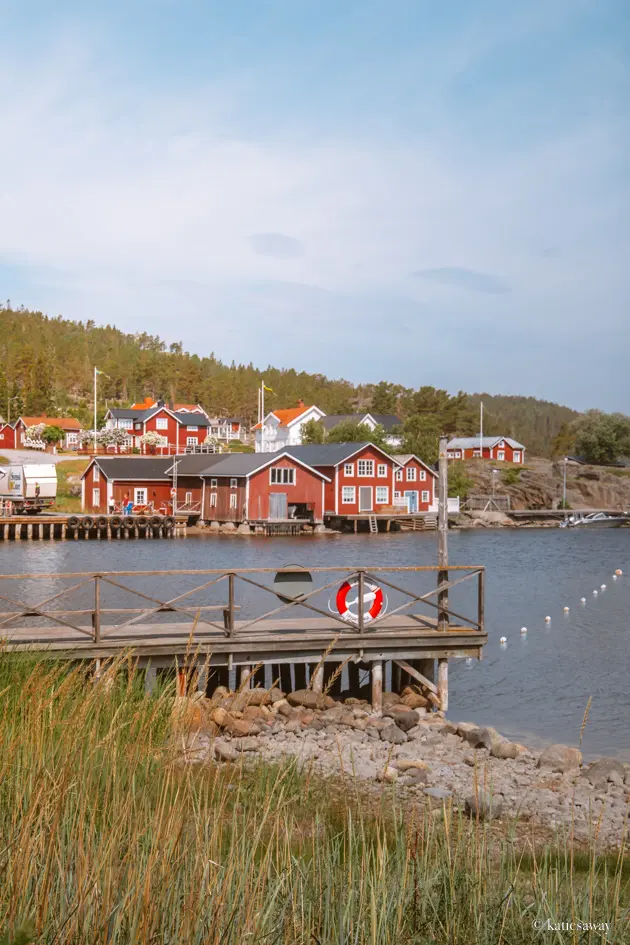
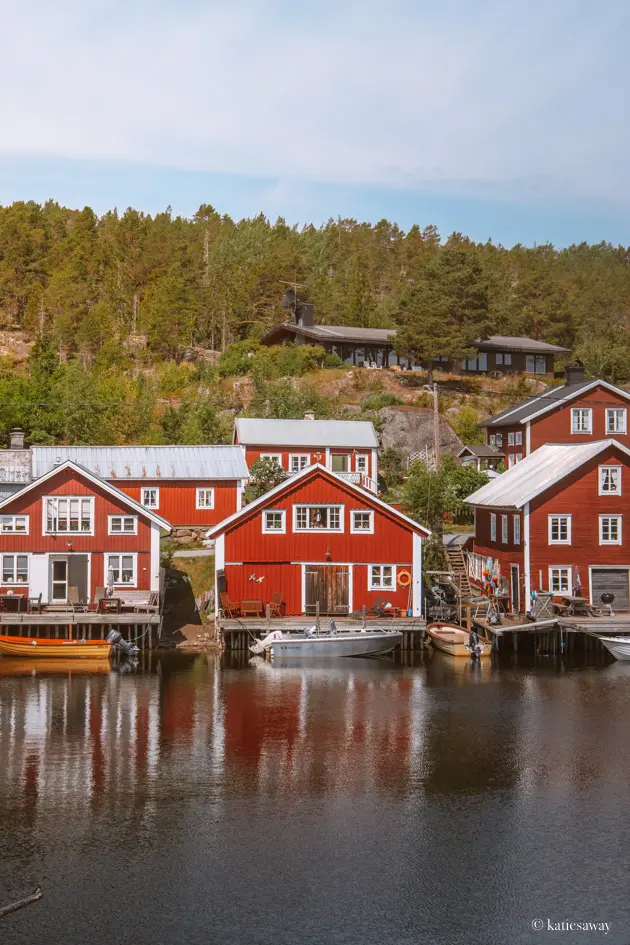
How to get to Sweden’s High Coast
To get to the High Coast of Sweden, you can either travel by car or public transport. Travelling by car, it is around a 5 hour 30 minute drive to Höga Kusten from Stockholm, and a round a 10 hour drive from Gothenburg.
Travelling to Sweden’s High Coast using shared transport is very easy. There are both night and day trains with connections to most cities in Sweden. From Gothenburg, both options take 9 – 10 hours. I recommend taking a night train as these usually have quite good time schedules (leave early evening and arrive in the morning). From Stockholm, the daytime trains only take around 5 hours, or 8 for the night trains.
The best place to travel to is Kramfors. From here, you can take a bus to the beginning of the Högakustleden or the towns in the area. You can find different train trips from all around Sweden and start planning here!
12 Places to Visit on Sweden’s High Coast
Norrfällsviken
Norrfällsviken is one of the most picturesque old fishing villages on Sweden’s High Coast. It is one of the most popular places to visit due to the big camping and holiday village Norrfällsvikens Camping, Stugby & Marina, and Storsand, the big sandy beach just a short walk from the centre of town. When you visit, make sure to stop off at the very small Fishing Museum (Fiskemuseet) that is in one of the small cabins just opposite Norrfällsvikens Kapell (the picturesque old church church). In here, there’s lots of interesting history to be learn about the fishing culture of Norrfällsviken and Sweden’s High Coast.
Norrfällsviken is located out on a peninsula in the middle of the High Coast. It isn’t so close to the other places on this list but makes for a lovely detour if you want to do a bit of a road trip. Additionally, it is a great place to base yourself for the trip with the cosy little summer cottages to rent right in the middle of the town!
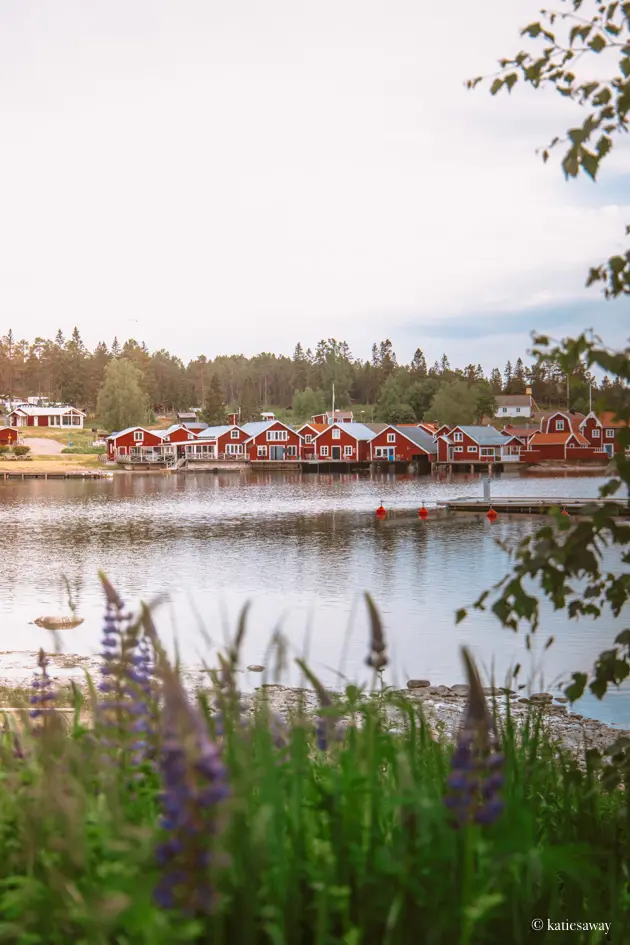
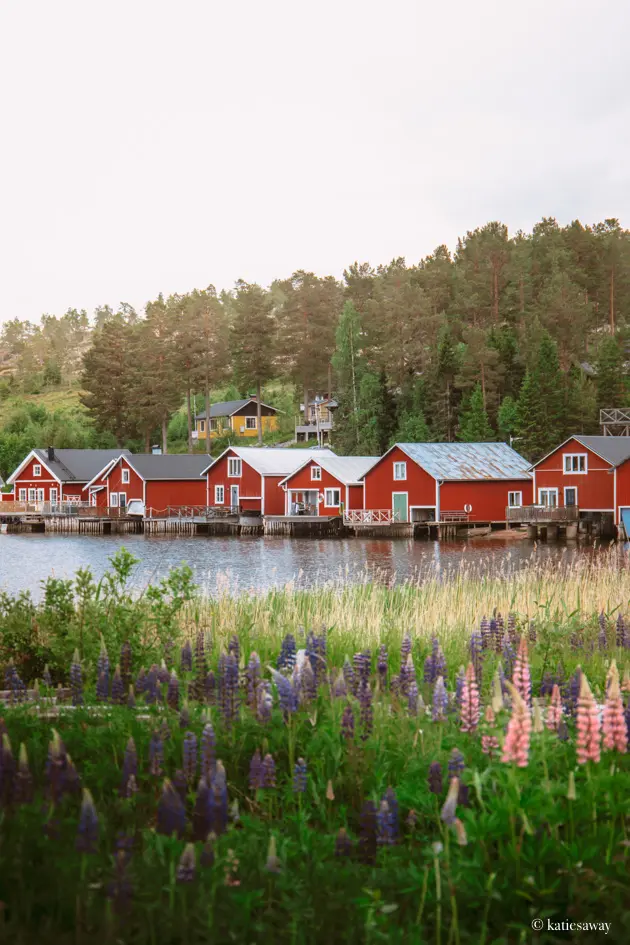
Bönhamn
Bönhamn is another really sweet small coastal village with a rich history and probably the number one village I recommend visiting on the High Coast. Here, the harbour sits around an inlet so is a beautiful spot for photography. This is one of the most popular places to visit in the summer so can get quite busy. You are not allowed to park in the town but there are a few carparks as you drive down the main road, so if it is busy I would recommend stopping a little before the town and walking down.
On one side of the water, you have lots of very picturesque boat houses, all painted in traditional falu rödfärg with beautiful details. On the other, you will the guest harbour, often bustling with boats during high season. If you walk past this, there is a very small sandy beach and a dock perfect for a swim! This is the best view over the village so even if you don’t fancy a swim it’s worth walking around.
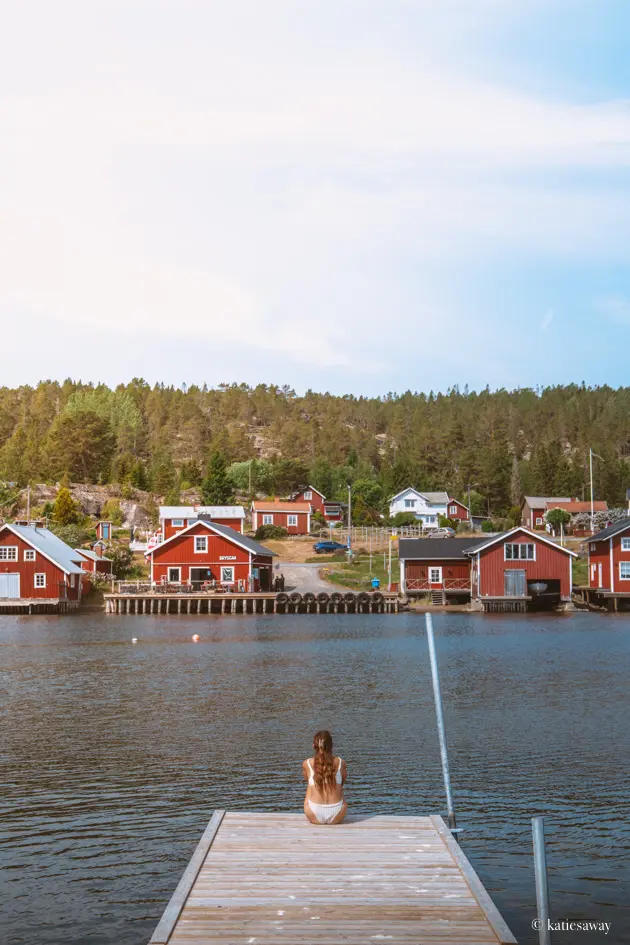
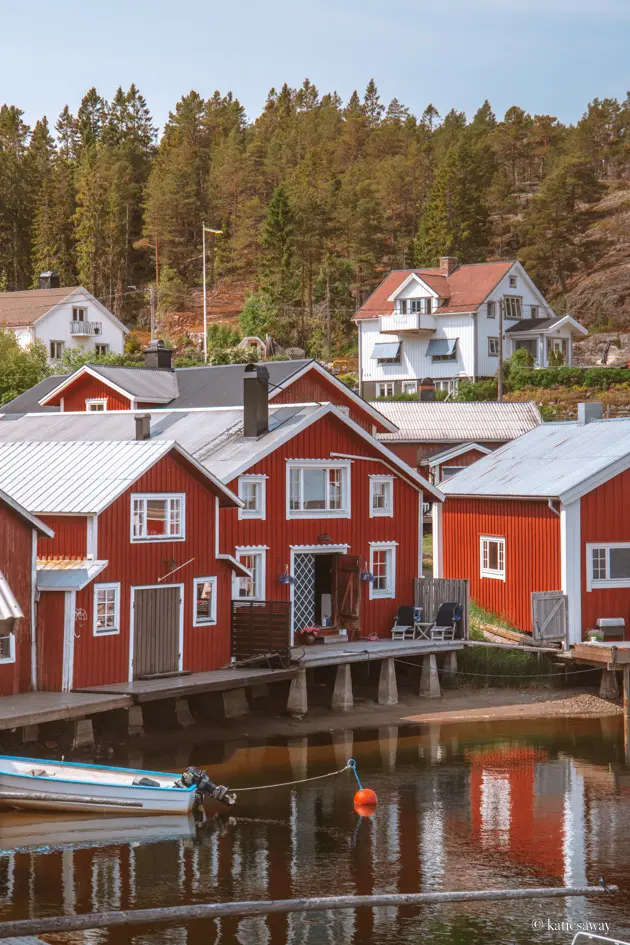
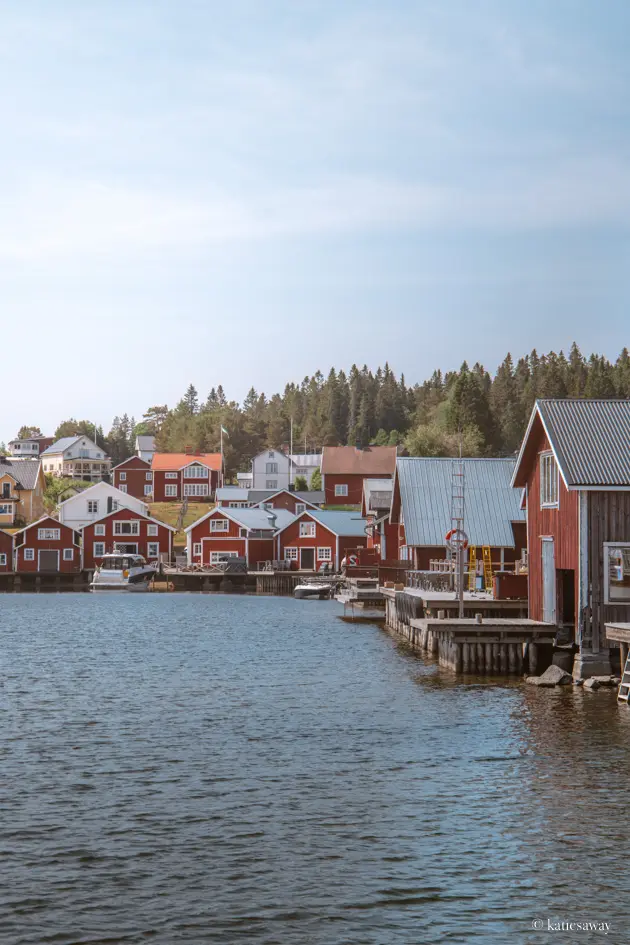
Hög Bonden
Hög Bonden is an island just off the coast of Bönhamn. It is the perfect day trip for anyone looking to visit an island without it taking up an entire day like with Trysunda or Ulvön. Högbonden is home to Sweden’s second highest lighthouse which sits on the top of the hill. It looks out over the high coastline and has amazing views. If you enjoy walking, there is a beautiful trail that follows the rocky cliffs at the base of the island, passing several beautiful swimming spots.
The lighthouse itself has not been in use until 1963, however, the lightkeepers house has now been transformed into a beautiful hotel and restaurant. If you are visiting on a day trip, you can get lunch or a fika from their amazing café. It is open every day from 11 – 14 during high season (July and August). If you are staying at the hotel, they serve breakfast and dinner in the garden watching out over the open sea. This is an amazing experience, whether you want to stay overnight or just visit Högbonden for the day!
To get to Högbonden, you can take a ferry from either Bönhamn or Barsta. In high season (July to Mid-August), the ferry runs four times daily. In low season, there is one ferry a day from Barsta on Fridays, Saturdays and Sundays.
You can find the timetable and book ferry tickets here or find more about the hotel here.
Högakustbron
Högakustbron (The High Coast Bridge or Veda Bridge) is the most iconic man-made structure on the High coast. While the bridge is one of Europe’s longest suspension bridges, it’s not the main attraction at this stop. Driving over the bridge and parking in the car park by Hotell Höga Kusten, you get an incredible view over the entire coastline. From here, if you follow the signs towards the “utsiktsplats” (viewpoint) up on the hill, the view only improves. There is actually also a really lovely small wind shelter and fire pit at the viewpoint for anyone wanting a nice outdoor lunch.
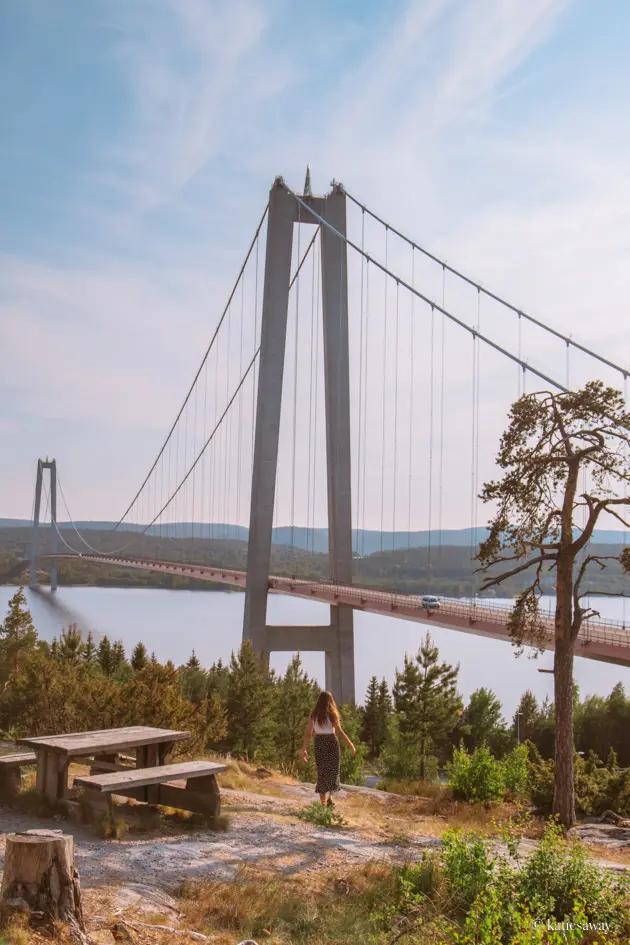
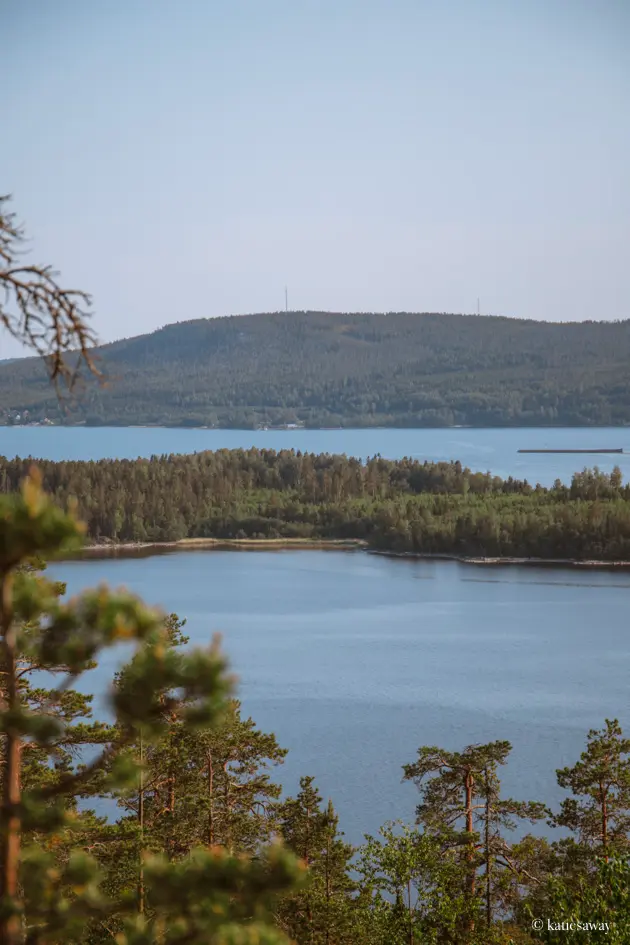
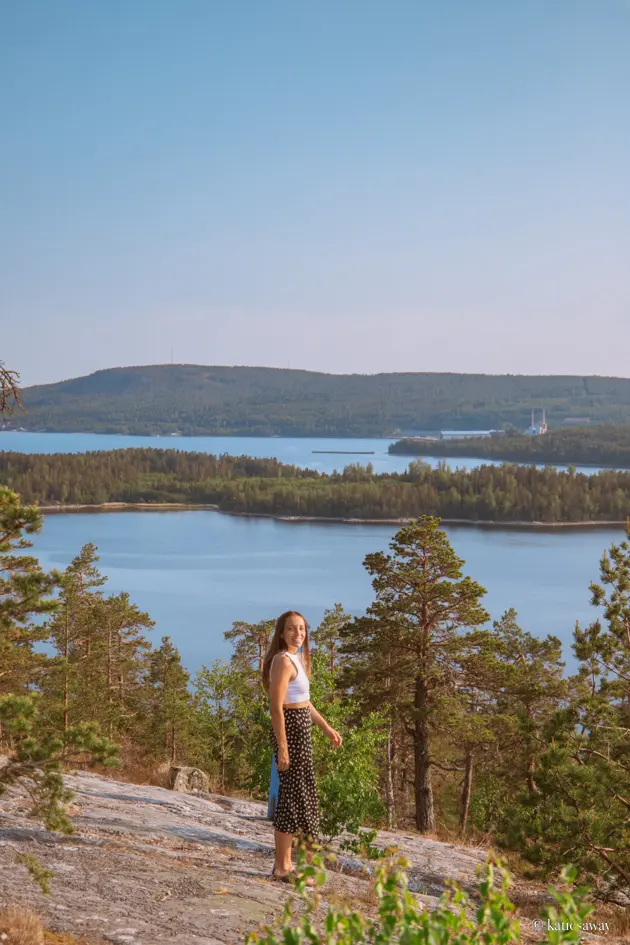
Skuleberget
Skuleberget is probably the most iconic mountain on Sweden’s High Coast. From afar, the mountain is unmissable, a vertical rock face towering over the landscape, formed around 10,500 years ago following the ice age. Back then, Skuleberget was only 9m above sea level, it’s peaks now at 295m. This makes it the place with the world’s highest coastline, one which even today continued to rise. If you don’t have much time on the High Coast, this is one of the places you have to visit!
Skuleberget is a popular hiking destination, with several trails of different difficulties leading to the mountain peak. If you are up for something a little more adventurous, don’t miss Via Ferrata, the rock-climbing adventure where you scale the edge of Skuleberget. This is really popular for people of all ages and ability levels, with three different trails you can take. Alternatively, if you don’t feel like a hike, you can take the chairlift to the peak of Skuleberget from Höga Kusten Liften. This trip is around 10 minutes long, whereas the walks take about 1 hour.
If you are relatively fit and used to hiking, I recommend taking the slightly more difficult hike which passes the King’s Cave (Kungsgrottan) hidden halfway up Skuleberget. Historically, this is thought to have been used as a hideout for bandits who used to roam the roads near Skuleberget. They took refuge in the cave and hid their treasures around the nature reserve. The cave itself is amazing and definitely worth a stop, although the trail to get there is quite difficult and perhaps not for anyone who is wary of heights.
At the base of the mountain, you will find Naturrum, a visitors centre with a café and a great museum about the world heritage site Höga Kusten, the nature in the area and how the landscape was formed. I definitely recommend making this one of the first places you visit on the High Coast and spending around 30 minutes in the museum.
At the peak, you will find Toppstugan Skuleberget, a cosy little café serving lunch and fika, as well as a large cabin where you are free to eat your own food, or just take a well-deserved rest.
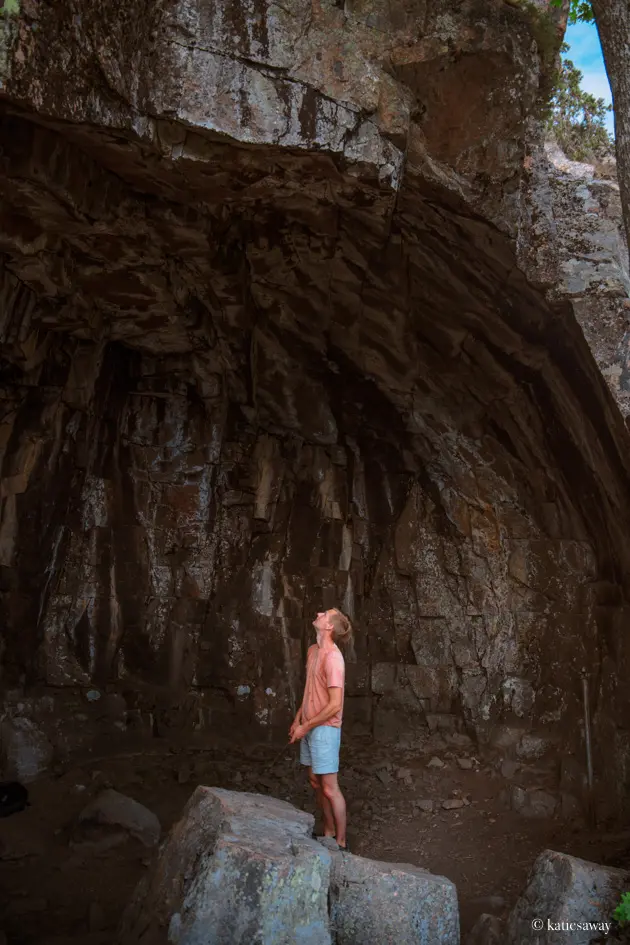
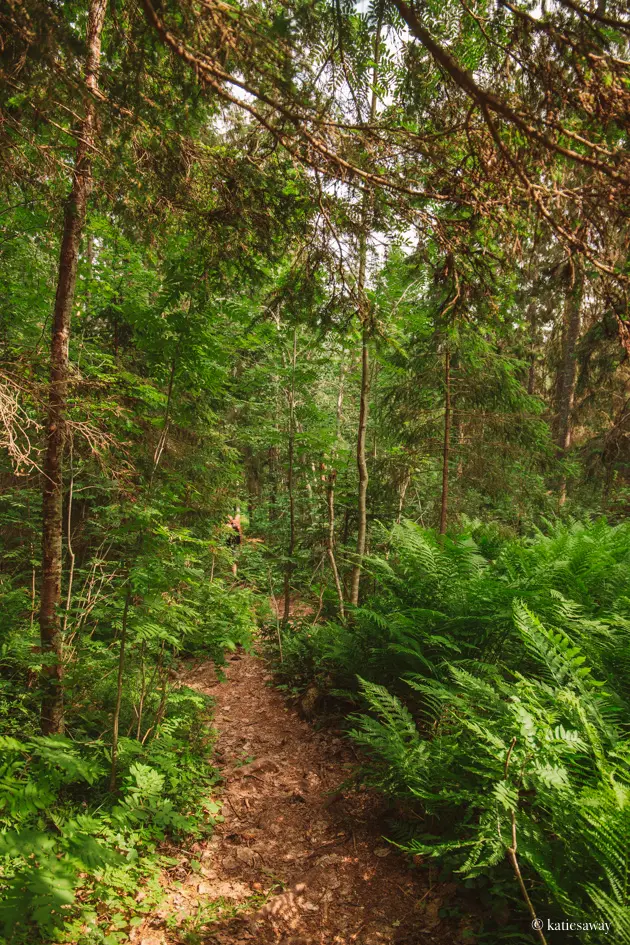
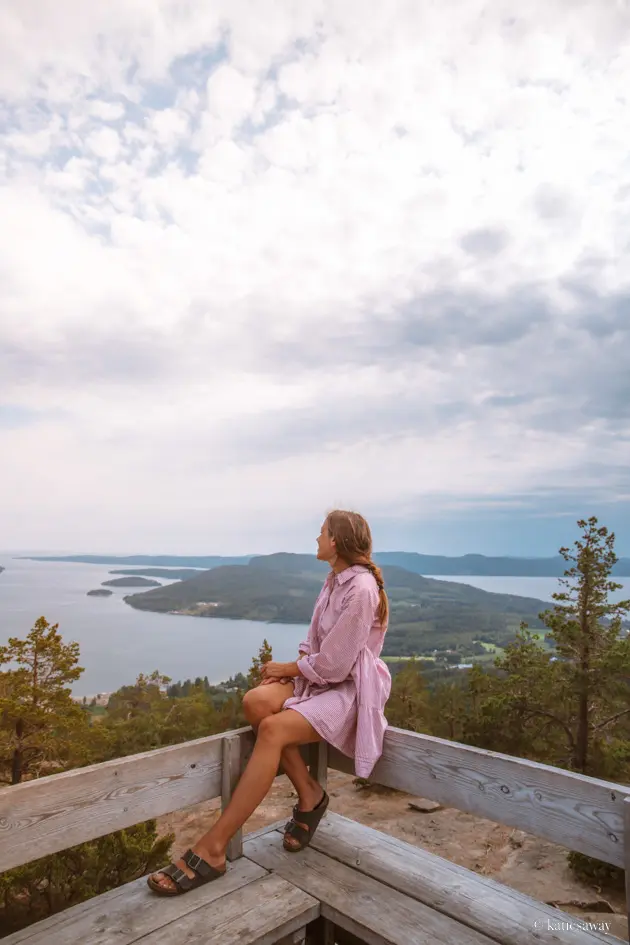
Skuleskogen National Park
Skuleskogen National Park is a must visit in the UNESCO world heritage site Höga Kusten. It is a haven for hikers and nature lovers, with some amazing rock formations and viewpoints that will keep anyone engaged. Don’t miss the iconic Slåttdalsskrevan Canyon, a 200m long canyon formed over 1200 million years ago. This site is just incredible, with the towering rocky walls either side of you, it really shows you how powerful nature can be.
If you enjoy hiking, make sure to visit Slåttdalsberget for an amazing view over the High Coast, or hike the trail aroud Nylandsruten for views of Trysunda and Ulvön. Lastly, don’t miss the sandy beach, Kälsviken. This is an amazing place for camping, or swimming in the summertime.
Hike the Högakustleden
The Högakustleden (High Coast trail) is an incredible hiking trail which passes through some of the best places to visit along the High Coast of Sweden. The trail is what makes the High Coast a popular hiking destination for both day and multi-day hikers. In total, the High Coast trail is 128.6km long and split up into 13 different sections. In runs from Örnsköldsvik in the North to Hornöberget and the High Coast Bridge in the south.
It is recommended that you take 5 – 7 days to complete the High Coast trail, depending on your fitness level and how much you wish to stop, or take detours along the way. There are various wild shelters and camping spots you can stay in along the hike, of course as well as “wild camping”. If you do plan to do this, make sure to first check the rules of camping on the High Coast. In some nature reserves there are designated places you can stay, and it is important that this is adhered to!
You can find more information about the High Coast Trail, the different sections and where you can stay here.
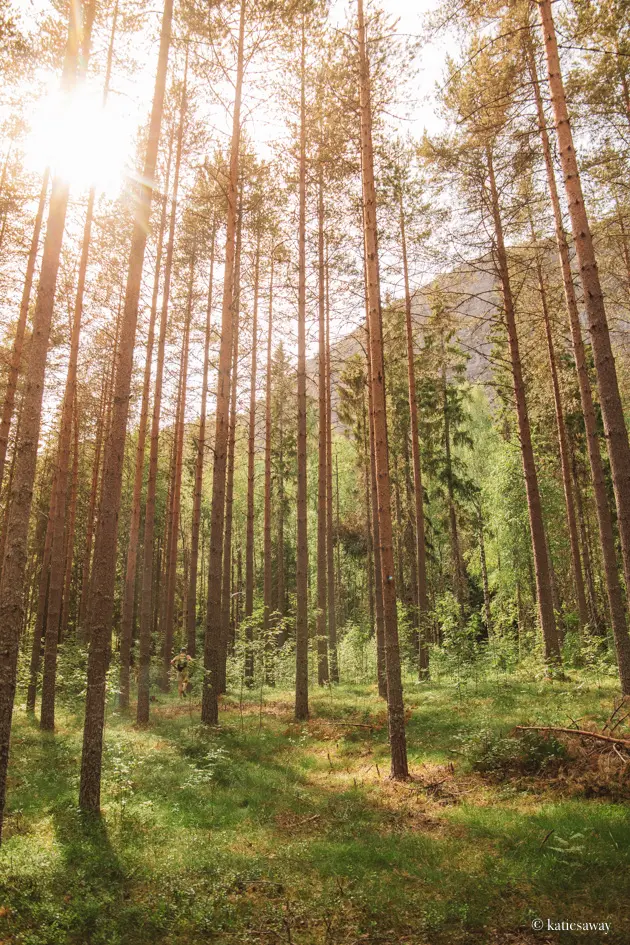
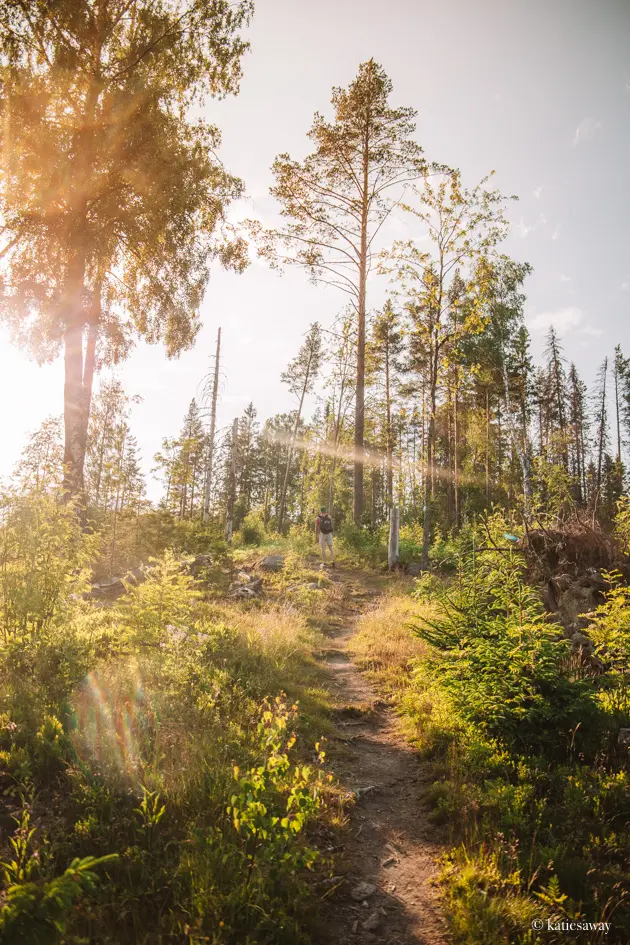
ARKNAT Wind Shelters
ARKNAT is a program that combines students from all around the world with leading architects to work with the landscape and create new, unique wind shelters. These wind shelters are free to stay in and are make for such a unique night out in the wild. There are a total of 9 ARKNAT wind shelters scattered across Sweden’s High Coast. Most of these wind shelters are on or close to the Högakustleden, making them the perfect stop for hikers. If you are not hiking the trail and want to visit a few of the ARKNAT shelters, I can recommend “The Tree Cube”, “Stranded”, and “Skogsdunge”. These are all really unique structures which are fun to visit even if you do not stay there. These three shelters are all really accessible making them a perfect stop along a road trip!
We spent the night at The Tree Cube which was an amazing experience! If you want to know more about the trail and facilities here is my guide to The Tree Cube.
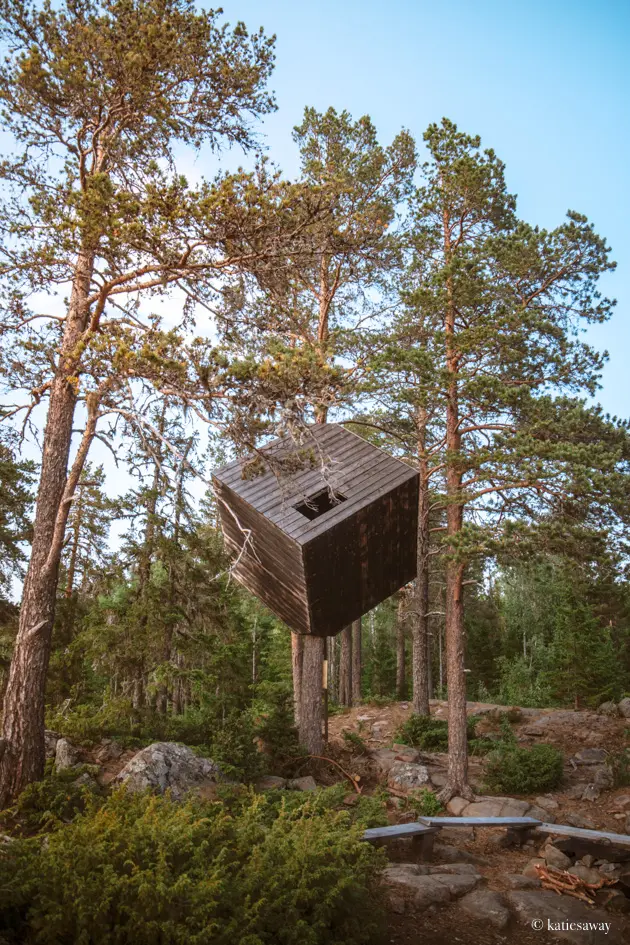
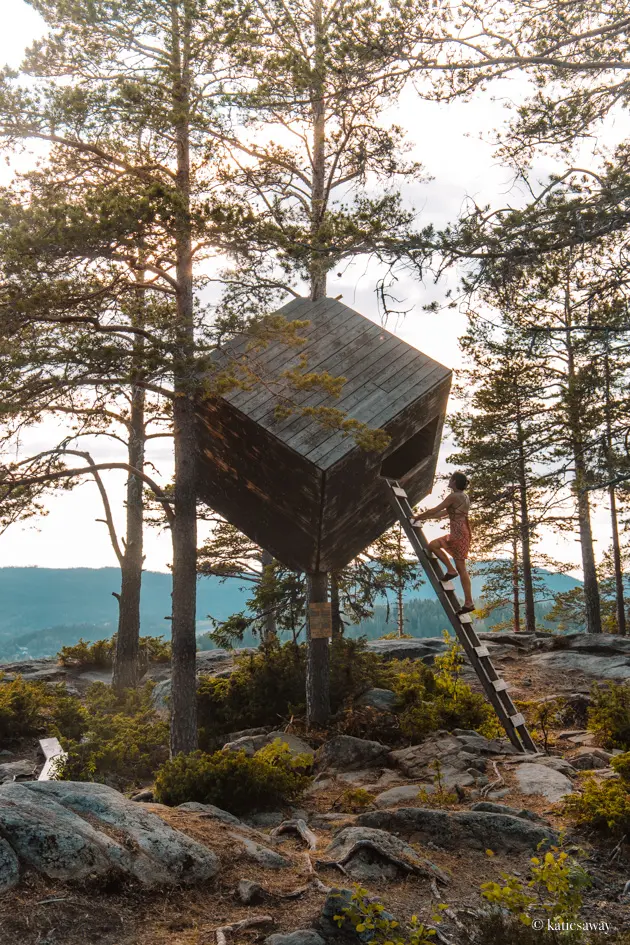
Trysunda
Trysunda is an incredible island, about a 1 hour ferry ride away from the mainland. The island is one of the further away islands in the region, so even in peak season it can be quite a sleepy place. What makes Trysunda so special is not just the historic fishing village, but it is the natural wonders of the island. On one side, you will find Storviken, a beach made up of circular rocks that can be heard brushing against each other in the tide. On the other, you will find a mix between white sandy beaches and red rocks that look like they come straight from mars. Here, you see visually see the proof of how the ice age affected the High Coast of Sweden more than anywhere else!
If you want to know more about visiting this beautiful island, make sure to check out my detailed guide to Trysunda!
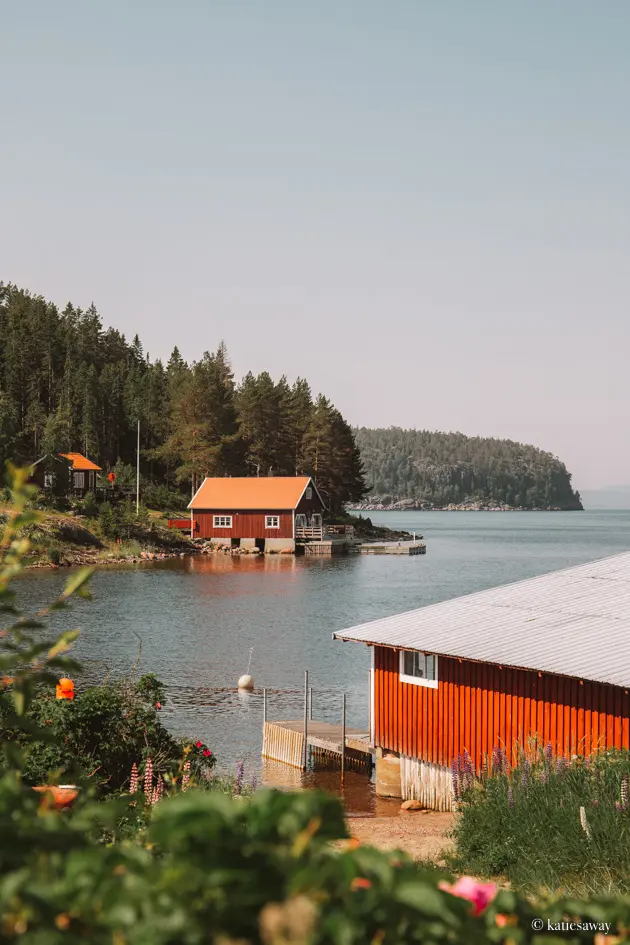
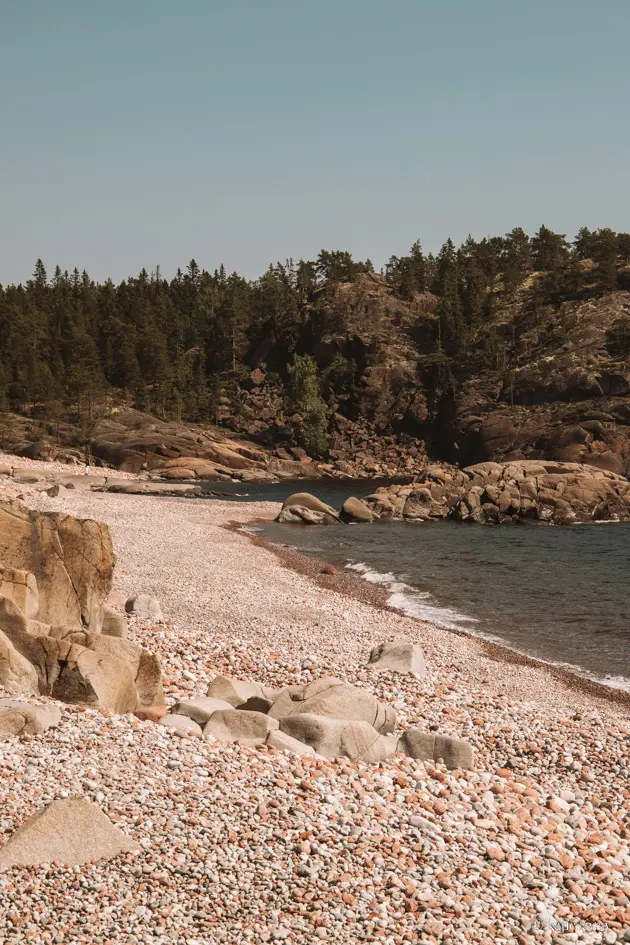
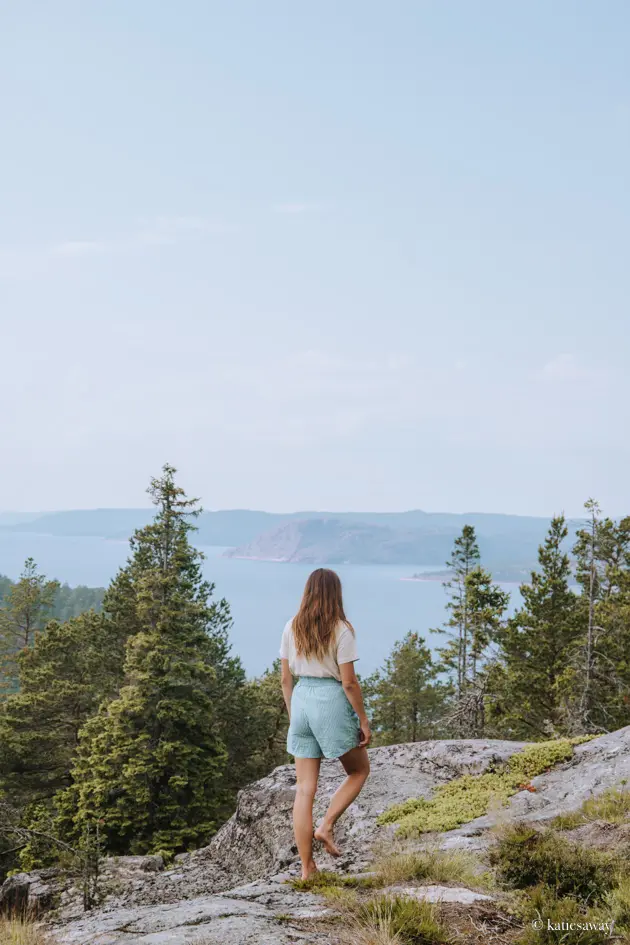
Ulvön
Ulvön, or the Ulvön islands, is a set of two islands just off the High Coast mainland. Most well-known for its fishing history, and the production of the Swedish classic surströmming (fermented herring), Ulvön is now one of the most popular places to visit along the Höga Kusten. However, on Ulvön you will find more than just the picturesque fishing villages, with so much beautiful nature to explore too. Head to Lotsberget for an amazing view out over the the harbour, or the old church and kapell for a glimpse into traditional Swedish church paintings. If you feel like a swim, head down to Röharn or Sandviken, or explore the untouched nature on Södra Ulvön.
To get to Ulvön, you can either travel with your own boat and stay in the guest harbour, or take a ferry. The ferries run from several different places on the mainland. With Kusttrafik, there is one ferry a day from Ullånger, Docksta and Mjällomslandet to Ulvönhamn from the middle of June to the middle of August. With M/F Ulvön, there are multiple trips a day, leaving from Köpmanholmen and passing through Strängöarna, Trysunda, and Fjären. This is a great boat to catch if you want to try island hopping in the archipelago.
Spending the night on Ulvön
If you want to stay the night, there are a few different options on Ulvön. Right in the harbour, you will find Ulvön Hamnkrog, a hotel with a restaurant and a bar, close to the harbour and perfect if you want to be in the midst of the summer atmosphere. Alternatively, there is Ulvö Lakeside Resort, a resort area with little cottages, an outdoor pool, and activities during the days. This is a great place to stay if you are travelling with kids. Lastly, there is Lilla Dalbo, an adult only holiday home with a private garden, perfect for anyone travelling in a group.
Rotsidan
Rotsidan is a beautiful nature reserve right by the coast in the Nordingrå. It is most well-known for its smooth cliffs which have been formed by the wind over thousands of years. At 4km long with forest and coastal areas, this is the perfect area for anyone looking to hike, enjoy nature, or simply take a swim or a picnic.
As well as walking trails, Rotsidan has some great facilities. There are two toilets and an amazing barbeque with a boardwalk and several benches with concrete fire pits. You can also camp at Rotsidan (in the designated area) which is what we chose to do on one night of our trip. It was a beautiful place to wake up, listening to the sea come in and out and the seagulls fly around above. Additionally, there is a great camper van parking spot in the car park where there is also a toilet and a bench set up.
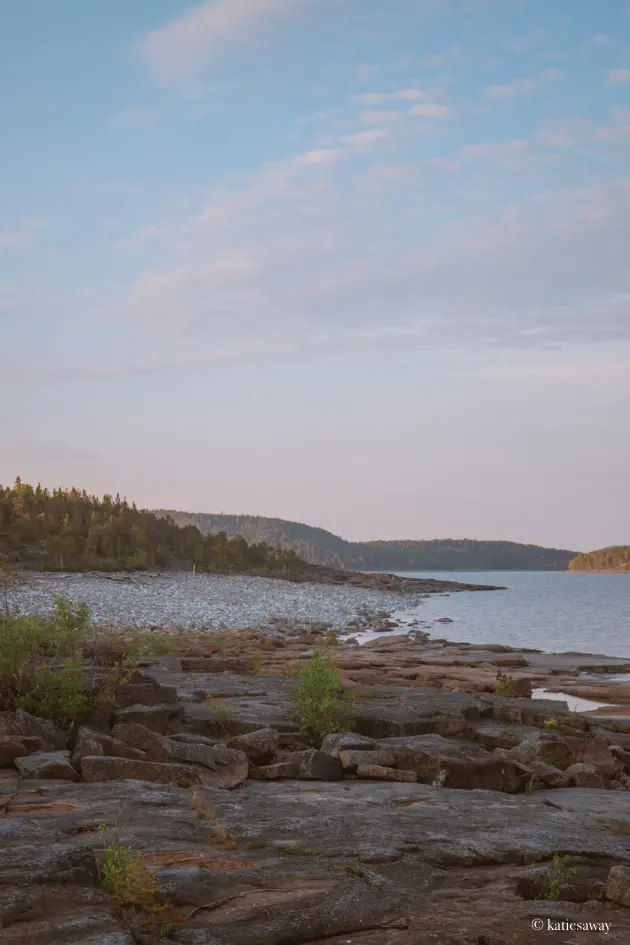
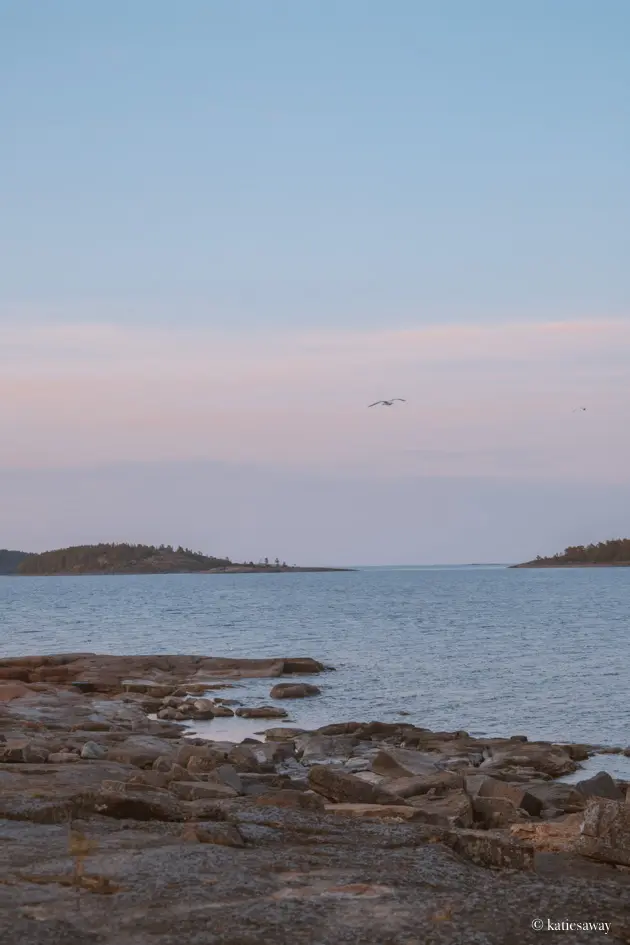
Mannaminne
Mannaminne is an open-air museum of sorts – a mix of arts, culture and history – just outside of Nordingrå. First developed by Anders Åberg, renowned Swedish artist, the museum is now home to over 50 different buildings from around the world. A strange mix of old and new, the aim of the museum is to show how nature, art and culture interact, with exhibitions ranging from the history of administration, to the Hungarian homestead, and an old Stockholm tram. As possibly strange as this sounds, is it definitely a place worth visiting on the High Coast if you want to see something a little different or have kids!
Mannaminne is open from May to September, however there are different opening hours through-out the season so I recommend checking this page in advance of your visit. You need about 2 to 3 hours to see Mannaminne.
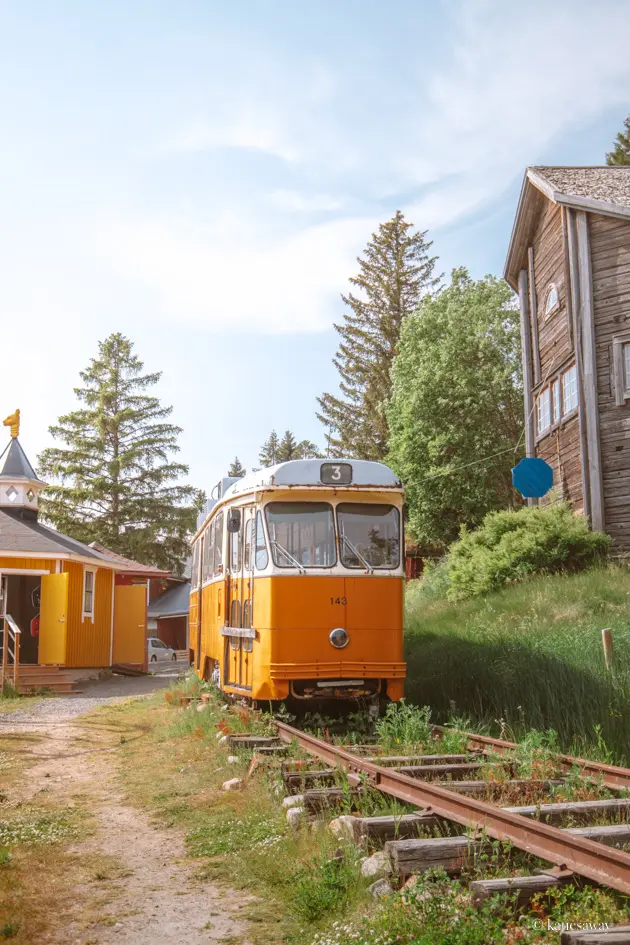
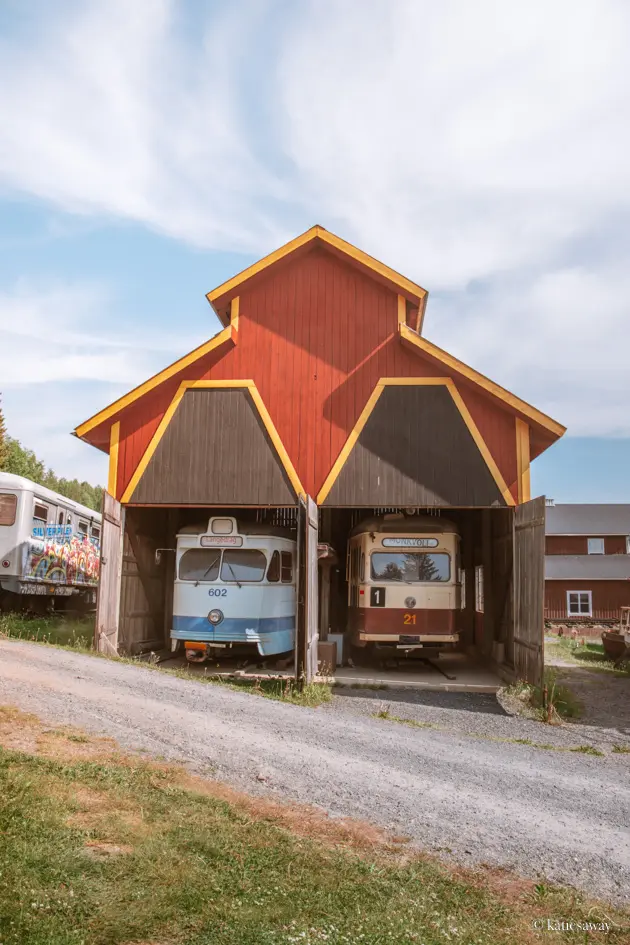
Gårdsbutiken i Nordingrå
Gårdsbutiken i Nordingrå (The Farm Shop in Nordingrå) is a really lovely little café/ farm shop located just outside of Nordingrå centre. Here, they serve really good food – classic Swedish dishes with a bit of a twist. The menu is quite small and changes regularly, and the lunch was a really good price and included coffee. We ate the Sjömansbiff and the Ragmunk which were both delicious! The farm shop is also amazing, with so many beautiful homewares either made by local or Swedish designers. I could have bought everything in there if we didn’t have to travel so far back to Gothenburg.
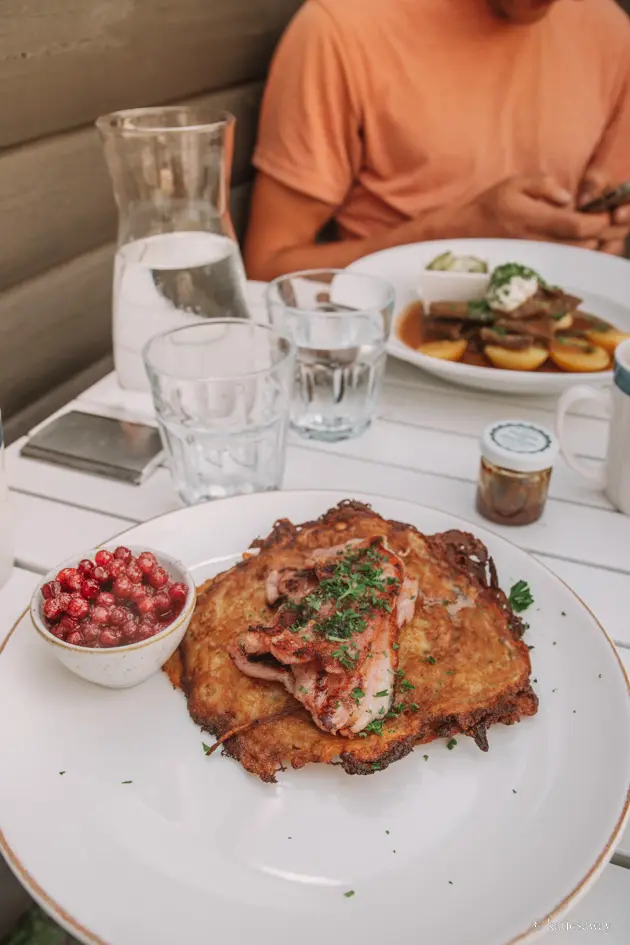
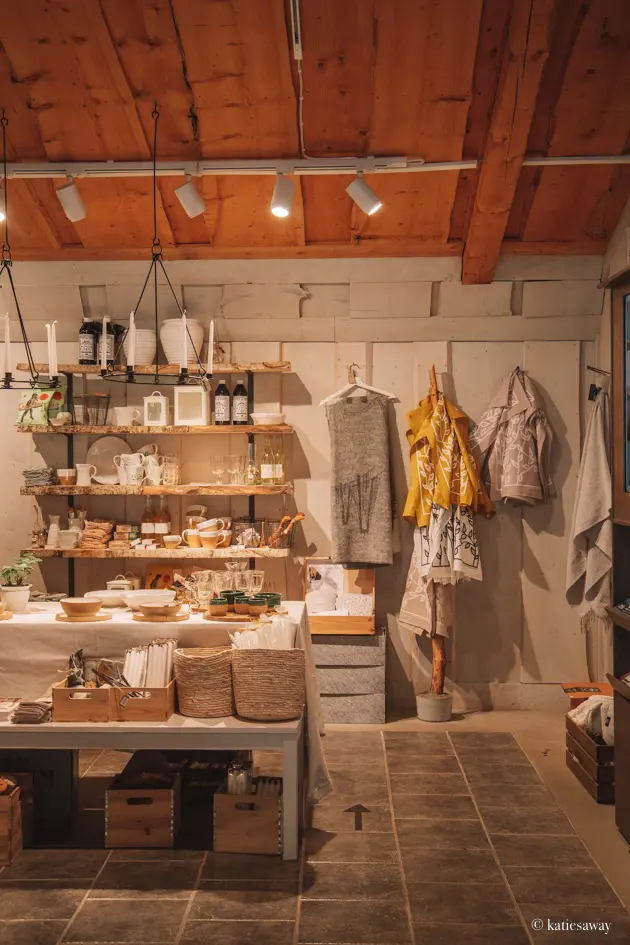
Frequently Asked Questions About Sweden’s High Coast
When is the best time to visit Sweden’s High Coast?
The best time to visit Sweden’s High Coast is from the end of June to the middle of August. The week after midsummer is when cafes, restaurants, and tour boats usually begin their high season schedules. This is when the towns come to life and have the atmosphere that makes them so enjoyable. If you want to visit off season, then June and September are also great in terms of weather, however, there is likely much less open at this time of year so it’s better for a nature focused traveller.
What is the high coast in Sweden?
The High Coast of Sweden is a UNESCO world heritage site, with the highest coastline in the world. Formed during the melting of the glaciers following the ice age 10,000 years ago, the area has some of the most unique natural landscapes in the world, with a coastline that is still rising even today.
How do I get to the High Coast Trail?
The High Coast trail begins at the High Coast Bridge and ends in Örnsköldsvik. The best way to get to the trail is to either take the train to Örnsköldsvik and begin the hike here, or to Kramfors where you can catch a bus to the High Coast Bridge.
12 Places to visit on Sweden’s high Coast: An Overview
The UNESCO World Heritage High Coast of Sweden (Höga Kusten) has so much to offer in terms of hiking, unique natural landscapes, small fishing villages, and amazing swimming spots. A trip to this area of Northern Sweden should be on everyone’s Sweden travel list, with so many unique natural wonders to explore. In this guide, I have taken you through 12 of the best places to visit and things to do on Sweden’s High Coast, however there is definitely so much more out there to explore!
As always, you have any questions or comments, don’t hesitate to leave them in the comments! And with that, I hope you enjoy your trip to the high coast as much as I have!
You may also be interested in these posts:
- Hiking to The Tree Cube Wind Shelter
- The Best Places to Visit During Summer in Sweden
- Gothenburg Hiking Guide
- West Sweden Road Trip Guide
- Visiting Umeå in the Winter
- All Sweden Guides
Latest Posts
The Best Things To Do In Lysekil
Lysekil is a beautiful town on the West Coast of Sweden. It’s the perfect place to base yourself for a…
The Best Christmas Markets Near Gothenburg (2024)
Gothenburg is known as ”Sweden’s Christmas City”, and for good reason! From late November through to Christmas the city lights up the winter…
A Weekend in Falkenberg – The Best Things To Do
The coastal region of Falkenberg, located in Halland in Southern Sweden, is renowned for its long, sandy beach, fantastic spa,…
The Best Boat Trips from Gothenburg
Gothenburg is a city best seen from the water, with a beautiful archipelago, a canal system circling the old city…
